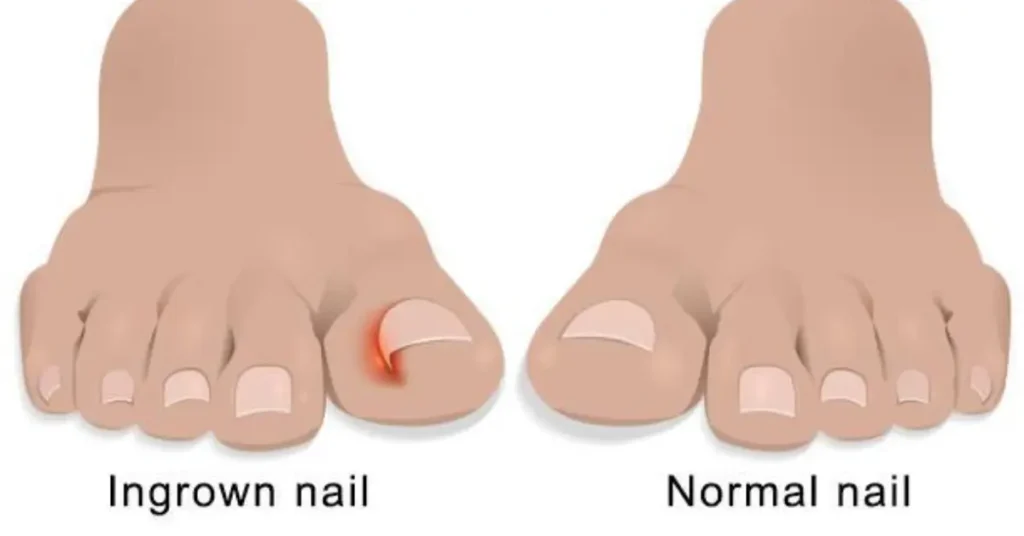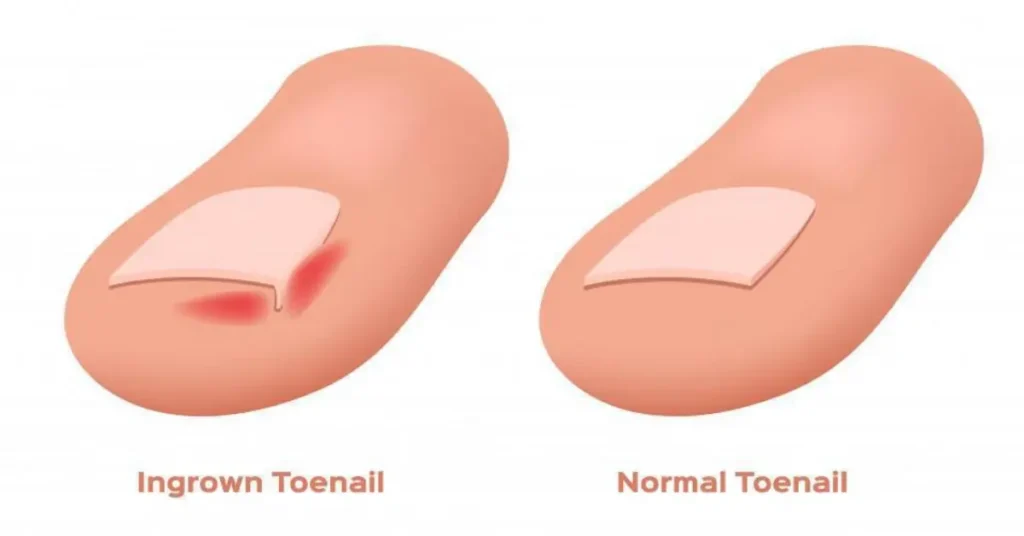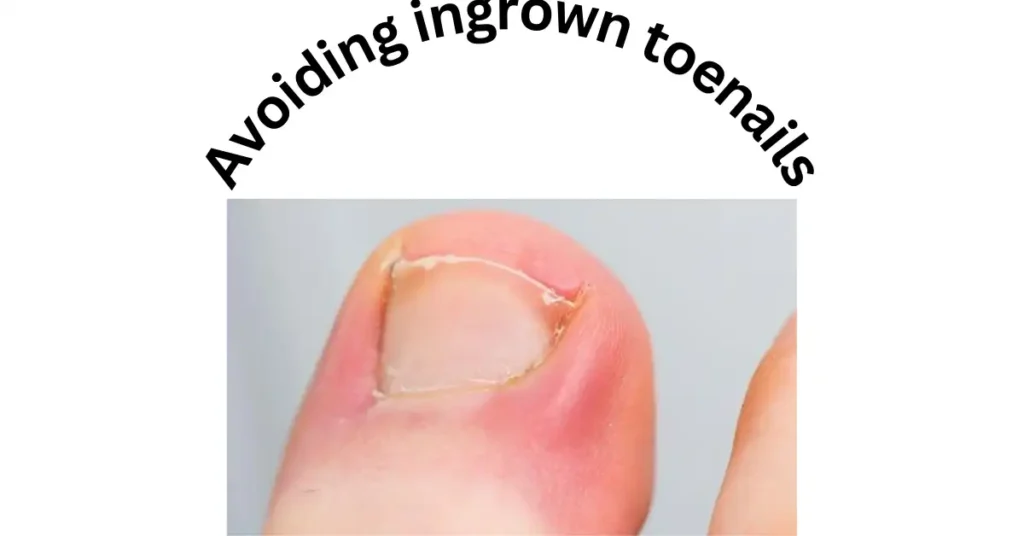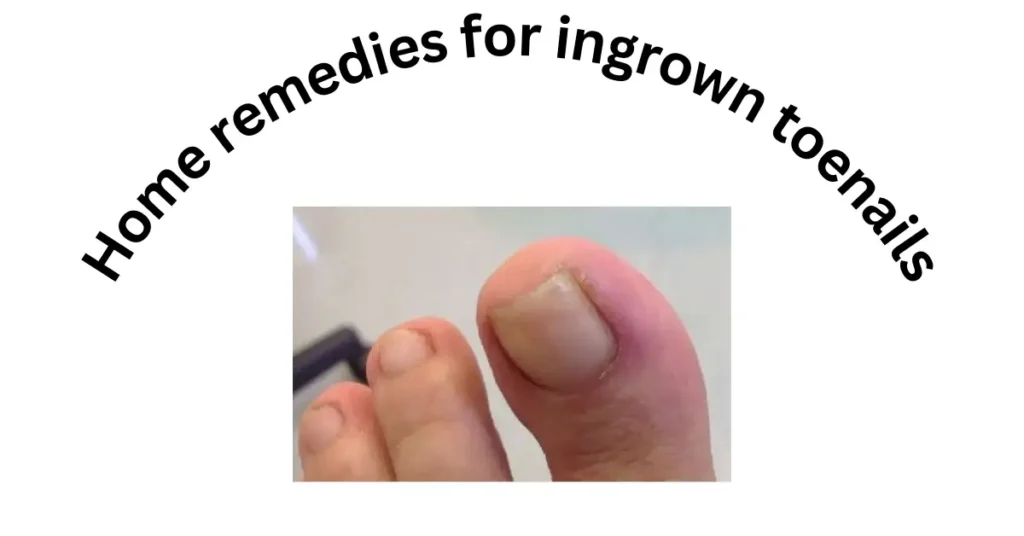Ingrown toenails can be a painful and persistent problem, often caused by a combination of tight-fitting footwear, improper trimming methods, and even genetic predispositions. If you’ve ever struggled with this issue, you’re not alone and there are effective steps you can take to both prevent and treat it at home. Dive into this guide to protect your foot health and keep your toes pain-free.

Table of Contents
What Is an Ingrown Nail?
Ingrown toenails occur when the nail grows into the skin instead of over it, often affecting the big toe and sometimes even fingernails, causing discomfort as the nail instead grows over the skin.

The main cause of ingrown toenails
Ingrown toenails are caused by a multifaceted range of external influences and internal physiological factors, making a comprehensive understanding essential for effective treatment.
Improper trimming
Improper trimming, such as cutting nails too short or rounding edges, is a primary culprit in ingrown toenails, creating a breeding ground for the nail to take root in the surrounding skin and disrupt its natural shape, leading to abnormal growth patterns and making the nail more susceptible to ingrown toenails.
Tight shoes and socks
Wearing tight and ill-fitting shoes can create a complex interplay of pressure and friction that leads to ingrown toenails; narrow toe boxes, high heels, and snug-fitting socks compress the toes, distorting their natural alignment and causing the nails to curve inward, making them susceptible to ingrown toenails.
Toe injury
A toe injury from traumatic incidents such as a stubbed toe or dropping heavy objects can severely disrupt the delicate balance of nail growth, causing ingrown toenails by leading the nail to become ensnared in the surrounding tissue and disturbing the natural growth pattern. This type of trauma can have far-reaching consequences, necessitating vigilance and preventative measures to fortify our defenses and maintain optimal foot health.
Objective causes
Objective causes of ingrown toenails include assaying factors like claw-shaped growth and underpinning health conditions, which offer a deeper understanding of the complications involved.
Diabetes
Diabetes, a habitual metabolic disorder with high blood sugar levels, can significantly impact foot health by contributing to ingrown toenails. Complications like diabetic neuropathy lead to nerve damage in the extremities, reducing sensation and increasing the risk of pain, pressure, and infections due to reduced blood flow. Effective management of diabetes is essential to avoid severe complications such as ulcers and to ensure proper healing.
Psoriasis
Psoriasis, a chronic autoimmune disorder, triggers inflammation and abnormal skin cell growth that can affect the nails and lead to psoriatic nail changes such as pitting, thickening, and separation from the nail bed. These structural abnormalities can cause ingrown toenails, with the irregular nail surface and associated inflammation creating a vicious cycle of discomfort and worsening symptoms. Based on my experience, addressing psoriasis with appropriate treatments can help break this cycle and enhance foot health.
Heredity
Heredity plays a significant role in determining an individual’s vulnerability to ingrown toenails, with inherited traits affecting the shape and structure of toenails. Genetics can predispose individuals to ingrowth through factors like naturally curved or excessively thick toenails, increasing the likelihood of developing issues. For effective prevention and management, understanding these hereditary conditions and genetic predispositions is essential, allowing for tailored interventions and appropriate care to address nail growth abnormalities.
What Are the Symptoms of an Ingrown Nail?
- Swelling and tenderness as the nail begins growing into the skin.
- Hardness and redness around the affected toe.
- Infected areas may show pus, bleeding, and increased pain.
- Hot and shivery sensations in the toe.
- Symptoms can progress through different stages, emphasizing the need for prompt attention.

In my experience, recognizing and addressing these symptoms early on can significantly aid in effective at-home treatment and prevent severe complications.
Avoiding ingrown toenails

To prevent ingrown toenails, experts recommend keeping toenails trimmed straight across, avoiding cutting them too short, and wearing sturdy, comfortable shoes to reduce pressure on the corners of the toenail as it grows. This common condition, often affecting the big toe, can be mitigated by preventing the nail from digging into the flesh at the side or corner of the toe, helping to avoid painful complications and infections.
Do not trim your toenails too short
Do not trim your toenails too short: Excessively trimming your toenails can increase pressure on your toes, especially when walking in tight shoes. This leads to sharp edges that can irritate surrounding tissue and increase the risk of ingrown nails. It’s best to keep toenails at a moderate length, ensuring even tips to avoid ingrown problems. Based on my experience, using a clean, sharp nail trimmer and managing thicker toenails or smaller ones with a specialized nail clipper is key to reducing risk. Regular trimming every week and consulting a podiatrist when needed can help prevent complications.
Trim your toenails straight across
Trim your toenails straight across: To reduce the risk of ingrown toenails, trim your toenails straight through rather than at an angle or with a rounded shape, which can cause sharp edges to irritate the surrounding skin. This method minimizes the likelihood of bothering the corners and developing ingrown toenails, especially for thicker toenails or the big toes.
Wear shoes that fit duly
Wearing shoes that fit duly is essential to prevent ingrown toenails. Shoes that apply excessive pressure on the toes or are too tight can cause painful toe trauma and negatively impact the surrounding tissue, leading to ingrown toenails. Properly fitted shoes, especially during sports like soccer, basketball, or running, help avoid toe trauma and ingrowth. As an expert, I recommend consulting with an experienced salesman for accurate measurement and fitting to ensure the best shape and size for your foot, which significantly lowers the risk of ingrown toenails.
Consider wearing defensive footwear
Wearing protective footwear such as steel-toed shoes or boots is vital for preventing injuries in high-risk jobs like those of a construction worker, plant worker, handyman, welder, firefighter, or park ranger. These steel-toed shoes and boots help shield your toes from trauma and injure toes, which can otherwise lead to ingrown toenails or misplaced toenails. Additionally, opting for footwear made of permeable material like leather or suede can manage sweaty feet and keep the skin and toenails healthy, while soft socks that wick moisture provide extra comfort.
Be careful not to end your toes
Walking in hard-toed slippers or with sharp nails can increase the risk of stubbed toes, leading to swelling and damage to the soft tissue. To prevent this, ensure furniture legs, like those of tables, chairs, and beds, are padded and keep your home free of clutter and slippery surfaces.
See a podiatrist on occasion
Seeing a podiatrist regularly, every three to six months is crucial for treatment and help with ingrown toenails and toe trauma. They can address issues like tight shoes, inflamed toes, and conditions related to diabetes such as poor circulation and reduced sensation in the feet. Regular check-ups can prevent severe problems like infected toenails, foot ulcers, or even gangrene due to lack of blood circulation, ensuring that toenail care and trimming are handled by trained foot specialists.
Home remedies for ingrown toenails
Using home remedies like soaking the foot in warm water to relieve pain and promote healing can be effective for treating an ingrown toenail.

Soaking in warm water
Soaking the affected foot in warm water or soapy water for about 20 minutes can help reduce swelling, ease pain, and reduce inflammation of an ingrown toenail, especially with the addition of Epsom salts for additional relief.
Soaking in diluted apple cider vinegar
Soaking the affected foot in diluted apple cider vinegar and warm water can act as a folk remedy for ingrown toenails due to its antimicrobial and anti-inflammatory properties, helping to relieve pain. Mix 1/4 cup of apple cider vinegar in a basin of warm water and soak for 20 minutes daily, then dry thoroughly.
Over-the-counter (OTC) ointment
Using an OTC antiseptic ointment or cream, such as Neosporin or Polysporin, can help reduce the risk of infection in an affected toenail. Apply the ointment three times daily as directed on the packaging, and watch for allergic reactions like itching or hives, in which case you should stop use and consult a medical professional.
OTC pain reliever
OTC pain relievers like acetaminophen (e.g., Tylenol) can relieve pain from an ingrown toenail if used within the daily recommended amount of 10 tablets (325 mg each), while ibuprofen (e.g., Advil) is a better option as it also relieves swelling. Be cautious of side effects such as abdominal pain, upset stomach, or diarrhea, and consult your doctor if you experience anything unusual.
Wearing comfortable shoes and socks
Wearing comfortable shoes and socks that avoid tight or crowded conditions is essential to prevent ingrown nails. Ensure your footwear has adequate space for your toes and doesn’t hit the edge of the toe bed, especially during physical activity like running, to limit pressure and support the healing process.
Wearing a toe protector
A toe protector provides cushioning and a barrier against ingrown toenails by covering the affected area with rings that fit over the entire toe. Some brands include medicated gel to soften the skin and assist in trimming and treatment as directed.
Wearing a toe brace
Toe braces are thin, composite devices that hold the toe in place and shield the skin while a new nail grows back to help treat and prevent ingrown toenails. You can find them online or at pharmacies.
Separating the nail from the skin with dental floss or cotton
Some experts recommend tucking small bits of cotton or waxed dental floss under the edge of an or ingrown toenail to encourage proper nail growth, as advised by the American College of Foot and Ankle Surgeons, but placing cotton improperly may increase pain and let harmful bacteria thrive; soaking the foot in alcohol before application can help reduce risk and discomfort.
Medical treatment for ingrown toenails
Some ingrown toenails may require medical intervention, particularly if underlying health conditions such as poor circulation or diabetes are present, which can increase the risk of severe complications; if the toenail appears infected with concerning symptoms like pus, or if the issue doesn’t resolve and causes pain or difficulty walking, it’s crucial to consider getting treatment. From my experience, timely medical intervention can significantly alleviate the risk of complications and improve recovery outcomes.
Oral antibiotics
A doctor may prescribe oral antibiotics for a severe ingrown toenail infection that doesn’t respond to other remedies; these medications help reduce pain and swelling while fighting infection, especially if symptoms include increased redness, color changes, throbbing pain, pus, warmth in the affected toe and surrounding area, or a foul odor. Common antibiotics include ampicillin, amoxicillin (e.g., Amoxil and Moxatag), and vancomycin (e.g., Vancocin).
Surgical procedures
When an ingrown toenail doesn’t improve with home remedies, a doctor might recommend surgical procedures such as partial removal or total removal of the toenail, using a local anesthetic to remove part of the nail’s border, the underlying nail bed, or the entire ingrown nail. This is a last resort for severe or recurring cases, particularly when symptoms like pain, swelling, and risk of infection persist.
How Can I Prevent Ingrown Nails?
Proper grooming is the first step to preventing ingrown nails.
Soak feet to soften nails before cutting.
Use nail clippers to cut nails straight across.
Leave enough nails to cover the toe; avoid using scissors.
Smooth sharp edges with an emery board.
Wear socks and shoes that fit properly; avoid tight, pointed, or high-heeled shoes and tight stockings.
Putting pressure on toes can lead to ingrown nails.
Parents should groom young children’s nails.
Older relatives may need help due to weakened vision or difficulty reaching their feet.
Conclusion
Ingrown toenails, while often manageable with proper care, can become a persistent issue if not addressed promptly. By understanding their causes, from improper trimming to tight footwear, and adopting preventive measures such as correct nail grooming and suitable footwear, you can significantly reduce your risk of developing ingrown toenails. For persistent or severe cases, seeking medical advice ensures effective treatment and helps avoid complications, maintaining both your comfort and foot health.
FAQ,s
What is the fastest way to get rid of an ingrown toenail?
To effectively address ingrown toenails, start by soaking the affected big toe in warm water with Epsom salts to ease discomfort and reduce swelling. Apply an OTC ointment to manage redness and pus, and use acetaminophen or ibuprofen to relieve pain. If symptoms persist, consider oral antibiotics or medical intervention for severe cases, potentially involving surgery. Proper trimming and avoiding tight shoes or high heels can prevent future issues.
